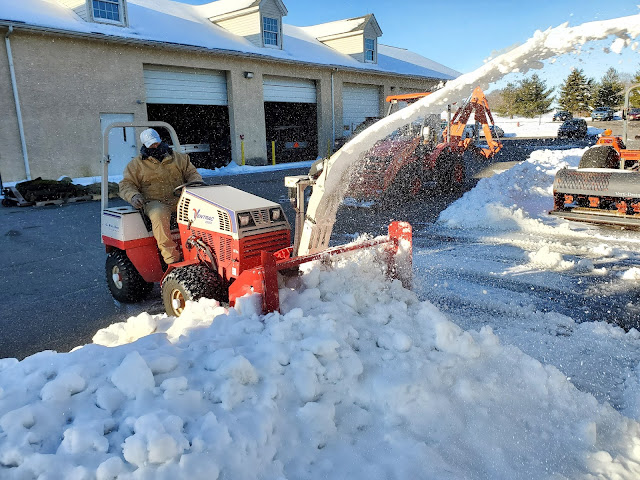As we mentioned in January (Putting Gravity to Work), the discharge pipe on one of the pump stations needed to be replaced. You can see in the picture below that a large stainless steel repair clamp got us through last year. However, since this pipe is the single pathway of flow from the pump station--the equivalent of the body's aorta--we couldn't take a chance on additional leaks popping up going into this season.
The big dig for this project started early in the week, and once most of the soil was removed, we had to use a jackhammer to break away the concrete thrust block from the old discharge pipe. In underground piping, thrust blocks are used to restrict pipe movement and separation, by transferring the energy into a larger area in the surrounding undisturbed soil.
We then were able to use our torch, cut the old discharge pipe and remove it. At this point, we turned to the team from Killiam Irrigation to build and install the new discharge pipe. As usual, whenever there's a tricky irrigation repair to be done, they have the answers.












